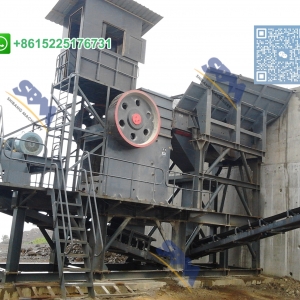Oilfields stand as dynamic and demanding arenas where invaluable hydrocarbons are extracted. While these operations are essential for meeting global energy needs, they inherently harbor risks to workers, the environment, and the industry at large. Prioritizing oilfield safety is paramount, aiming to safeguard lives, prevent environmental catastrophes, and ensure the enduring viability of oil and gas endeavors. In this article, we delve into the significance of oilfield safety, the hurdles it faces, and the measures imperative for fostering a safe working environment amidst the complexities of this domain.

The Importance of Oilfield Safety
1. Protection of Human Lives
the presence of heavy machinery, high-pressure equipment, and exposure to hazardous chemicals, oilfield operations inherently pose dangers to workers. Stringent safety measures and extensive training are vital in mitigating the risks of accidents, injuries, and fatalities.
2. Prevention of Environmental Disasters
Oil spills, leaks, and pollutants from oilfield activities can wreak havoc on the environment, leading to degradation, water contamination, and adverse impacts on local communities. Adhering to rigorous safety protocols and robust environmental safeguards can significantly reduce the likelihood of such disasters.
3. Safeguarding the Industry’s Viability
Oilfield accidents can have severe economic repercussions, disrupting supplies, increasing market volatility, and inflicting financial losses. Ensuring safety is not only a matter of compliance but also pivotal for the industry's long-term sustainability and profitability.
4. Enhancing Reputation and Accountability
Maintaining a positive public image is essential for oil and gas companies. Safety breaches and accidents can tarnish reputation, erode trust, and expose firms to legal liabilities. Prioritizing safety demonstrates accountability and a commitment to ethical business practices.
5. Worker Well-being and Morale
Fostering a robust safety culture contributes to improved worker well-being and morale. When employees feel their safety is prioritized, they are more engaged, motivated, and committed to their tasks, resulting in a positive and productive workforce.
6. Compliance with Regulations
Regulatory authorities enforce stringent safety standards to protect workers, the environment, and the public. Compliance with these standards is not only a legal obligation but also a moral imperative for conducting business responsibly.
7. Risk Mitigation
Proactive measures, such as stringent safety protocols and risk assessments, aid in identifying and minimizing potential hazards. This approach reduces the likelihood of accidents and enhances emergency preparedness.
8. Sustainability and Longevity
The industry's ability to operate safely and ethically is crucial for its long-term viability. Demonstrating a commitment to safety is essential for maintaining social license to operate and ensuring the industry's survival.

Measures and Best Practices for Ensuring Oilfield Safety
1. Comprehensive Training
Continuous training on safety protocols, emergency response procedures, and proper equipment usage is essential for ensuring worker preparedness.
2. Safety Protocols and Procedures
Standardized safety policies covering all aspects of operations should be developed and implemented, with employees well-versed in these protocols. oil and gas simulation training system was designed to assist major drilling training facilities or petroleum schools in conducting training in various disciplines of the petroleum industry. The creation of these online simulation training systems has been critical to the growth of the petroleum sector and continuing education in the oilfield business.
3. Technological Advancements
Embrace innovative technologies like automation, remote monitoring, and robotics to enhance safety and reduce human intervention in risky situations.
4. Preventive Maintenance
Regular inspection and maintenance of equipment and facilities help identify and rectify issues before they escalate into accidents.
5. Safety Culture
Promote a culture of safety throughout the organization, encouraging active participation and accountability at all levels.
6. Regulatory Compliance
Adhere to local and international safety regulations, staying abreast of changes and using audits as opportunities for improvement.
7. Emergency Response Plans
Develop and maintain well-defined emergency response plans to effectively address various contingencies.
8. Environmental Safeguards
Implement preventive and response measures to mitigate environmental risks, including oil spills.
9. Risk Assessments
Conduct comprehensive risk evaluations to identify and address potential hazards.
10. Safety Audits and Oversight
Regular audits and reviews of operations ensure compliance and identify areas for improvement.
11. Health and Wellness Programs
Implement programs that address factors contributing to accidents, promoting overall well-being.
12. Communication and Reporting
Foster open communication channels for reporting safety concerns without fear of reprisal.
13. Continuous Improvement
Regularly review and enhance safety practices based on lessons learned and industry advancements.
14. Safety Performance Metrics
Use key metrics to track safety performance and identify areas for enhancement.
Conclusion
Prioritizing safety in oilfield operations is paramount for protecting lives, preserving the environment, and ensuring the industry's sustainability. By adhering to stringent safety standards, embracing technological advancements, and fostering a culture of safety, the oil and gas sector can create a safer working environment, mitigate risks, and secure its long-term profitability. Ultimately, investing in safety measures is not just a regulatory requirement but a moral obligation to uphold ethical business practices and safeguard the well-being of workers and ecosystems alike.






